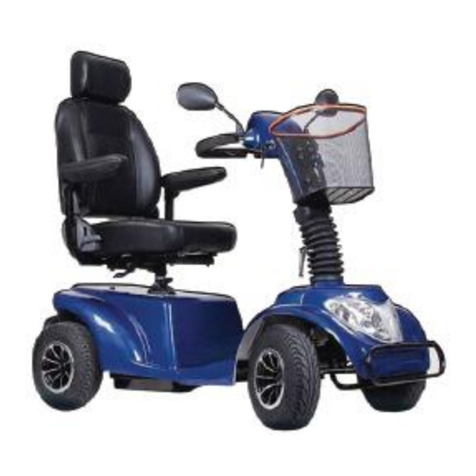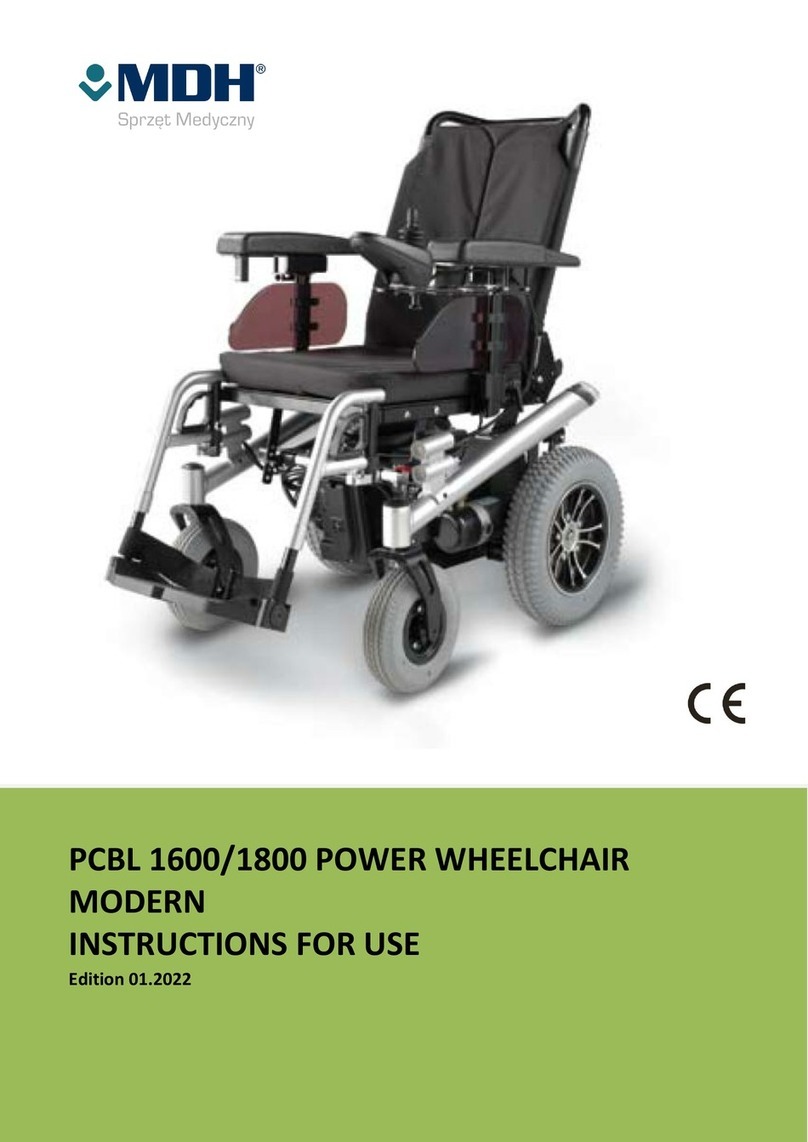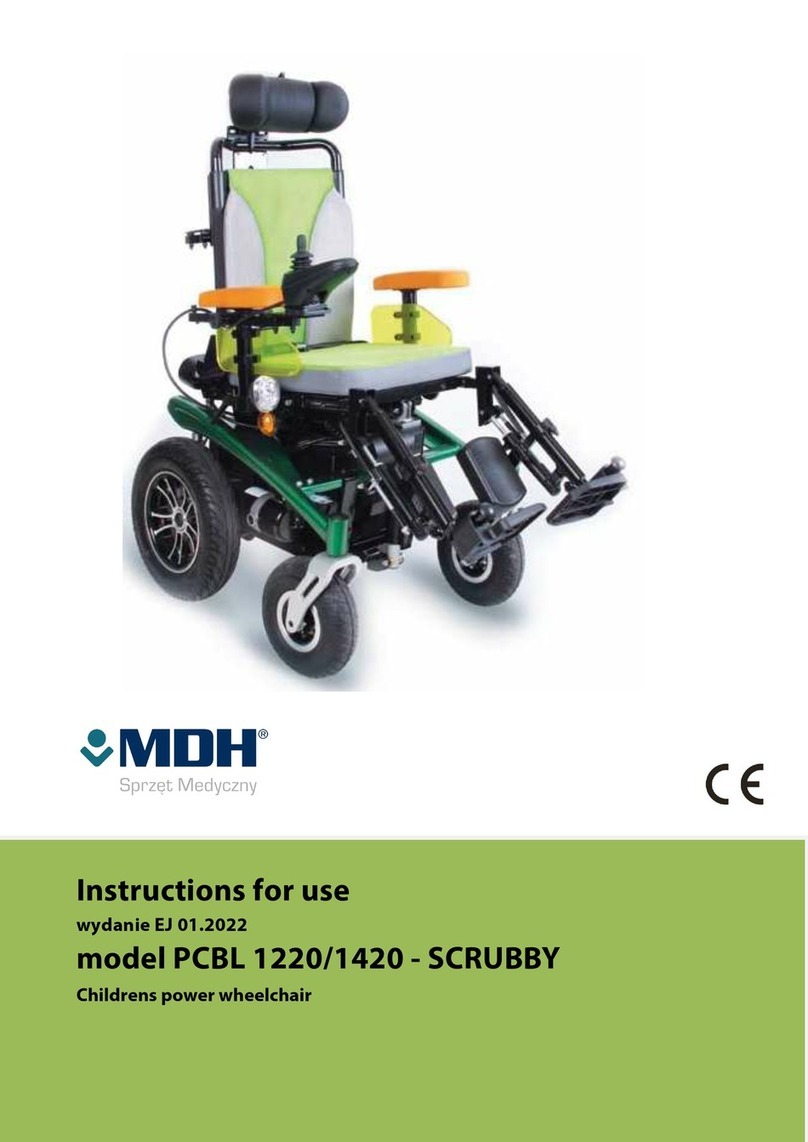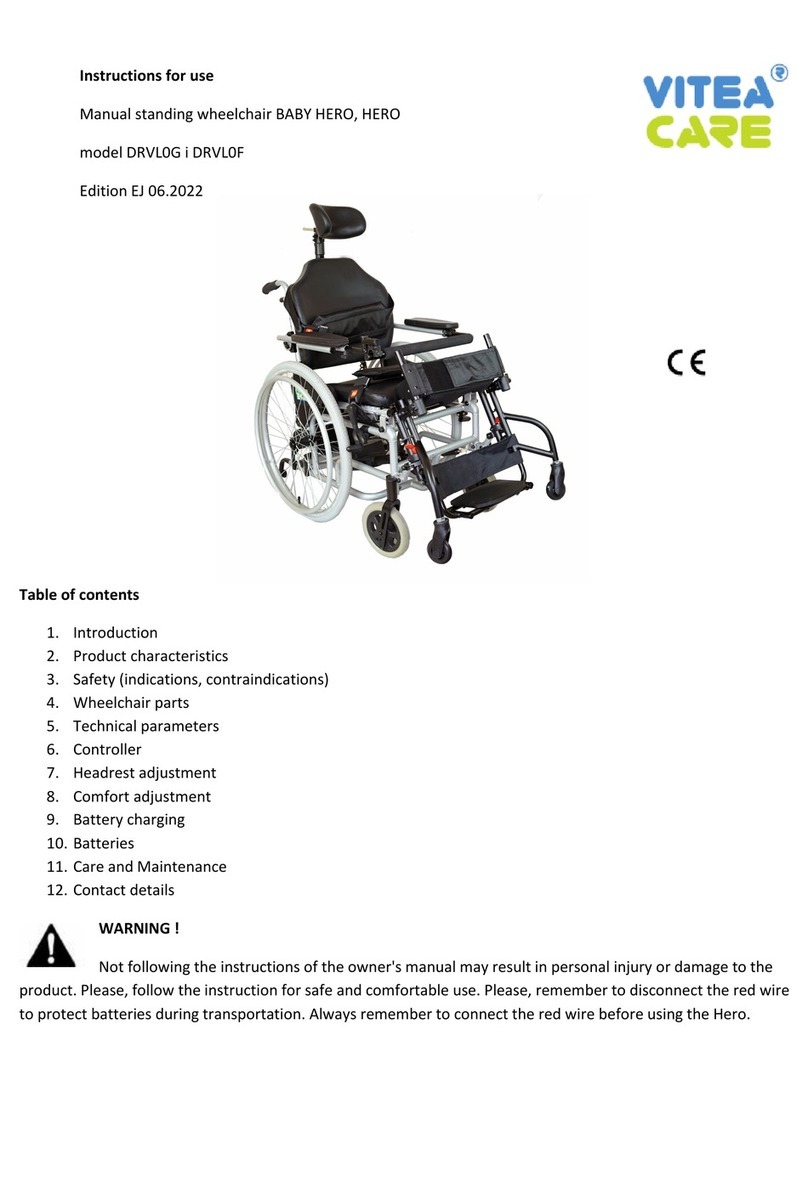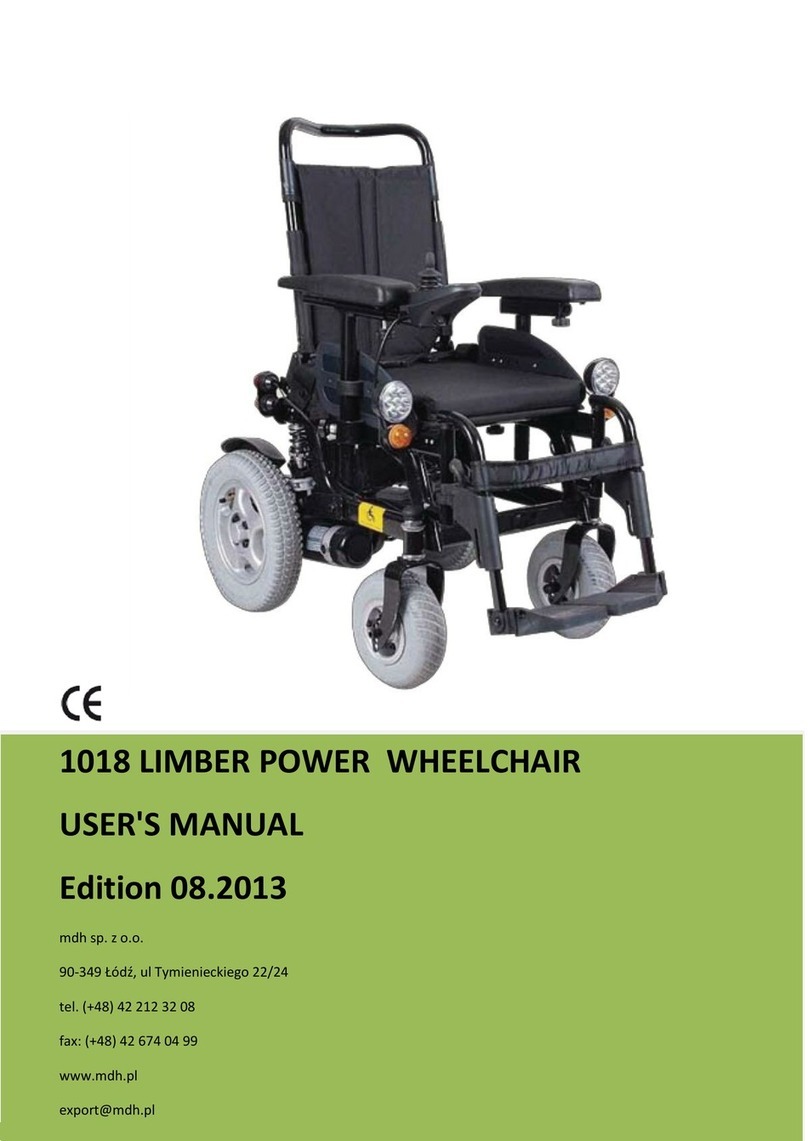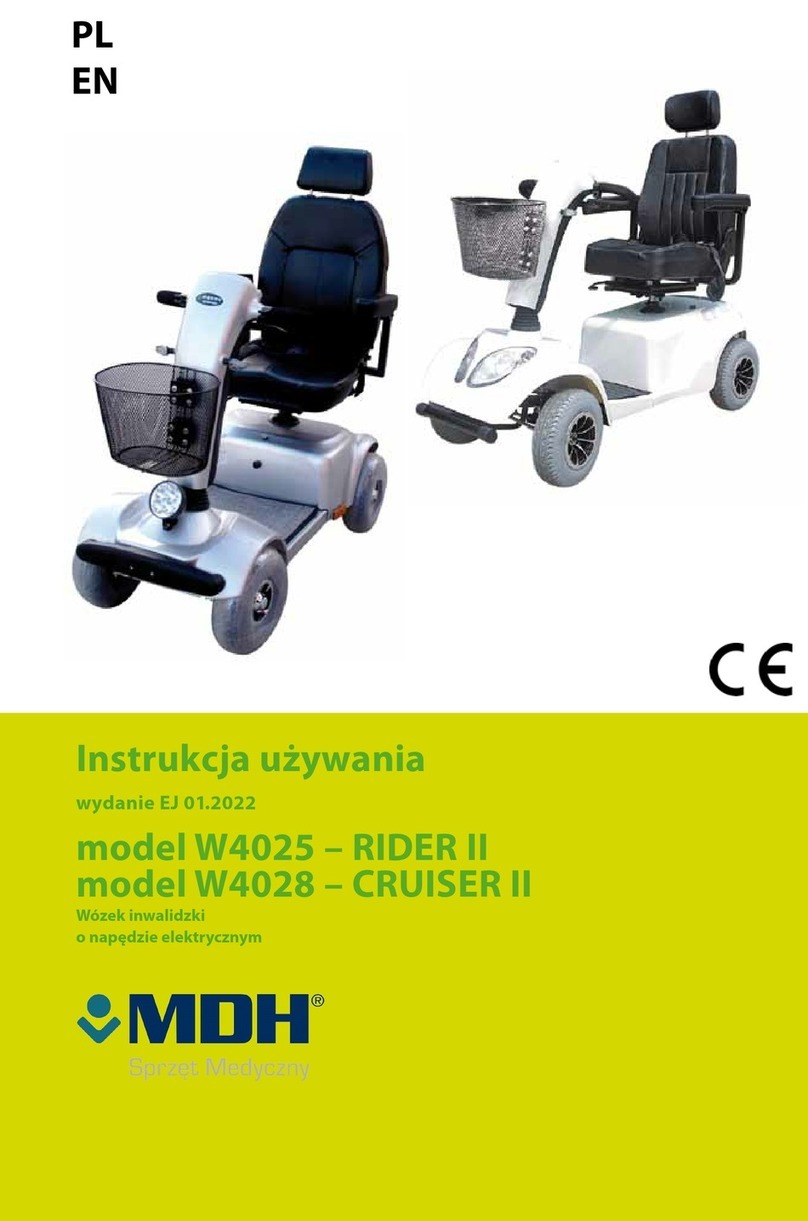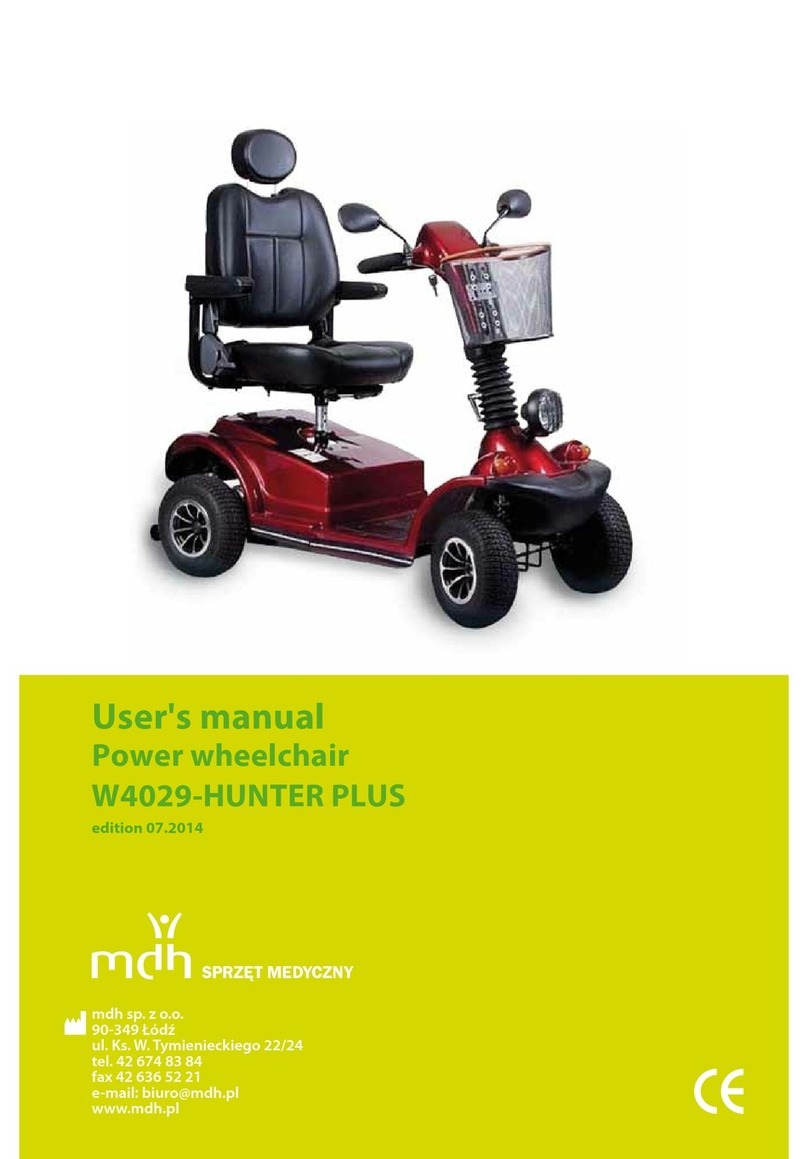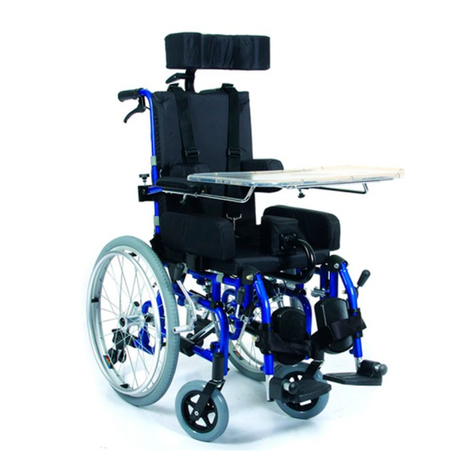
6
the wheelchair control system.
The intensity of EM energy can be measured in Volts per meter (V/m). Each power
wheelchair can resist EMI up to certain intensity. This is called “immunity level”. The
highest immunity level, the better control provided. Current technology provides at least
20 V/m immunity level which gives optimal protection against common sources of EMI.
Following the below rules will help you to avoid unintended brake release or wheelchair
movements which can cause serious injury.
1. Do not turn on any personal communication devices such as CB radios or mobile
phones when the wheelchair is turned on.
2. Avoid transmitters such as radio or TV stations and try not to come close to them.
3. In case of unintended movement or brake release, turn off the wheelchair
(providing it is possible and safe).
4. Do not add any accessories/components or do not modify the wheelchair without
consultation with a distributor as it may make the wheelchair even more
susceptible to radio wave sources.
5. All the incidents related to EMI should be reported to the producer –please,
indicate also the location of wave source.
Always turn off your power wheelchair immediately (providing it is
possible and safe) when you experience any of the following situations:
1. unintended wheelchair motion,
2. unintended and uncontrollable direction of movement,
3. problems with brakes and brake system.
The immunity level of 20 V/m protects against influence of most popular sources of
electromagnetic waves but you should always remember the basic rules of safety outlined
above.
Driving outdoor:
The wheelchair is not designed to move in the street traffic.
7
Do not use the wheelchair during rain or snow, when the temperature is higher than
30°C or lower than 0°C.
Do not use the wheelchair on soft, uneven, unprotected surfaces such as grass,
gravel, sand or decks, beside a river or a lake.
Do not use the wheelchair for off-road driving.
If possible, do not use the wheelchair outdoor at night.
Make sure that there are no obstacles behind you when you drive backwards. We
also recommend setting the speed at the slowest position.
Avoid sudden stops and turns, always try to take turns gently.
Always keep your arms on the armrests and feet on the footrest while driving.
Do not stand while driving. Do not lean from side to side, or pick up objects from
the ground while the power wheelchair is in motion.
Do not try to climb curbs higher than 7cm.
The power wheelchair is not designed to navigate the stairs. Always use the ramps
or elevators.
Do not try to drive over a hole/gap wider than 10 cm.
Driving over uneven terrain:
Navigating over uneven terrain can be more risky. It is important to observe the
following safety rules. Failure to follow them could result in serious injury.
Do not try to climb a hill which grade exceeds 10°.
Do not move backwards while going up/down the hill.
Do not use the wheelchair on soft, uneven, unprotected surfaces such as grass,
gravel or sand.
When you drive down the slope, choose the slowest speed.
• Non utilizzare la sedia a rotelle durante la pioggia o la neve, quando la tempe-
ratura è superiore a 30 ° C o inferiore a 0 ° C.
• Non utilizzare la sedia a rotelle su superci morbide, irregolari, non protette
come erba, ghiaia, sabbia o ponti, accanto a un ume o un lago.
• Non utilizzare la sedia a rotelle per la guida fuoristrada.
• Se possibile, non usare la sedia a rotelle all’aperto di notte.
• Assicurati che non ci siano ostacoli dietro di te quando guidi all’indietro. Si
consiglia inoltre di impostare la velocità nella posizione più lenta.
• Evita arresti e svolte improvvise, cerca sempre di fare i turni delicatamente.
• Tenere sempre le braccia sui braccioli e i piedi sul poggiapiedi durante la guida.
• Non stare in piedi durante la guida.
• Non appoggiarsi da un lato all’altro o raccogliere oggetti da terra mentre la
carrozzina elettronica è in movimento.
• Non cercare di salire sui cordoli più alti di 7 cm.
• La carrozzina elettrica non è progettata per navigare le scale. Utilizzare sempre
rampe o ascensori.
• Non provare a guidare su un buco / spazio più largo di 10 cm.
Guidare su terreno irregolare:
Navigare su terreni sconnessi può essere più rischioso. È importante osservare
le seguenti regole di sicurezza. La mancata osservanza potrebbe causare gravi
lesioni.
• Non tentare di scalare una collina con una pendenza superiore a 10 °.
• Non muoverti all’indietro mentre sali su / giù per la collina.
• Non utilizzare la sedia a rotelle su superci morbide, irregolari e non protette
come erba, ghiaia o sabbia.
• Quando guidi lungo la pendenza, scegli la velocità più bassa.
